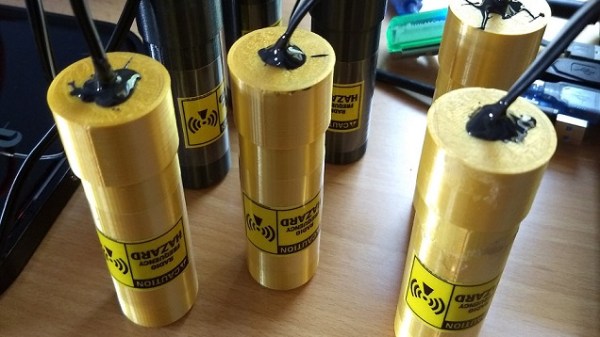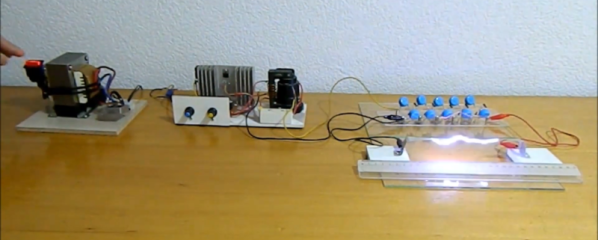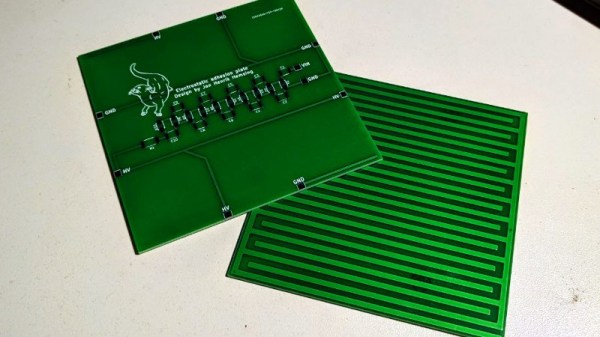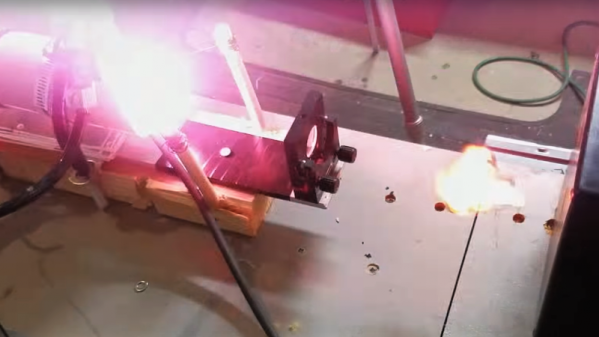[Rostislav Persion] has for some time been interested in making small, portable EMP devices capable of interfering with nearby electronics. In these EMP devices, high voltage is used to create a portable spark gap generator, whose operation in turn creates electromagnetic pulses capable of resetting or scrambling nearby electronics such as pocket calculators.

His original EMP box designs relied on spark gaps constructed from metal screws threaded into a clear plastic insulator, but this newest design ditches fussy screw adjustments and relies on perfboard. By cutting out a single row of plated perfboard holes and soldering the high voltage terminals to each end, the empty holes in between form the essential parts of a spark gap.
It’s even adjustable: one simply bridges adjacent holes with solder to effectively decrease the gap. As for generating the high voltage itself, a DC voltage multiplier from Amazon takes care of that. Watch the device reset some calculators in the short video below.
Looking for high-voltage experiments that aren’t so sketchy? Get yourself a Van de Graff generator, some metal balls, and a little bit of oil, and make some art.
Continue reading “Scrambling Pocket Calculators Made Easy With EMP Box V2”


















